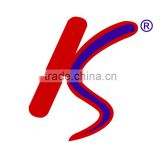Hot water Boiler
Negotiable /Set
Min.Order:1 Set
Quick Details View All >
Wuxi Kaisheng Electricity Petrochemical Equipment Co., Ltd.
Product Details
Boiler
A boiler is a closed vessel in which water or other fluid is heated. The fluid does not necessarily boil. (In North America the term "furnace" is normally used if the purpose is not actually to boil the fluid.) The heated or vaporized fluid exits the boiler for use in various processes or heating applications, including central heating, boiler-based power generation, cooking, and sanitation.
The pressure vessel of a boiler is usually made of steel (or alloy steel), or historically of wrought iron. Stainless steel, especially of the austenitic types, is not used in wetted parts of boilers due to corrosion and stress corrosion cracking. However, ferritic stainless steel is often used in superheater sections that will not be exposed to boiling water, and electrically-heated stainless steel shell boilers are allowed under the European "Pressure Equipment Directive" for production of steam for sterilizers and disinfectors.
In live steam models, copper or brass is often used because it is more easily fabricated in smaller size boilers. Historically, copper was often used for fireboxes(particularly for steam locomotives), because of its better formability and higher thermal conductivity; however, in more recent times, the high price of copper often makes this an uneconomic choice and cheaper substitutes (such as steel) are used instead.
For much of the Victorian "age of steam", the only material used for boilermaking was the highest grade of wrought iron, with assembly by rivetting. This iron was often obtained from specialist ironworks, such as at Cleator Moor (UK), noted for the high quality of their rolled plate and its suitability for high-reliability use in critical applications, such as high-pressure boilers. In the 20th century, design practice instead moved towards the use of steel, which is stronger and cheaper, with weldedconstruction, which is quicker and requires less labour. It should be noted, however, that wrought iron boilers corrode far slower than their modern-day steel counterparts, and are less susceptible to localized pitting and stress-corrosion. This makes the longevity of older wrought-iron boilers far superior to those of welded steel boilers.
Cast iron may be used for the heating vessel of domestic water heaters. Although such heaters are usually termed "boilers" in some countries, their purpose is usually to produce hot water, not steam, and so they run at low pressure and try to avoid actual boiling. The brittleness of cast iron makes it impractical for high-pressure steam boilers.
Boilers can be classified into the following configurations:
Contact Supplier

You May Like
New Products
Popular Searches
Recommended Products
Find Similar Products By Category